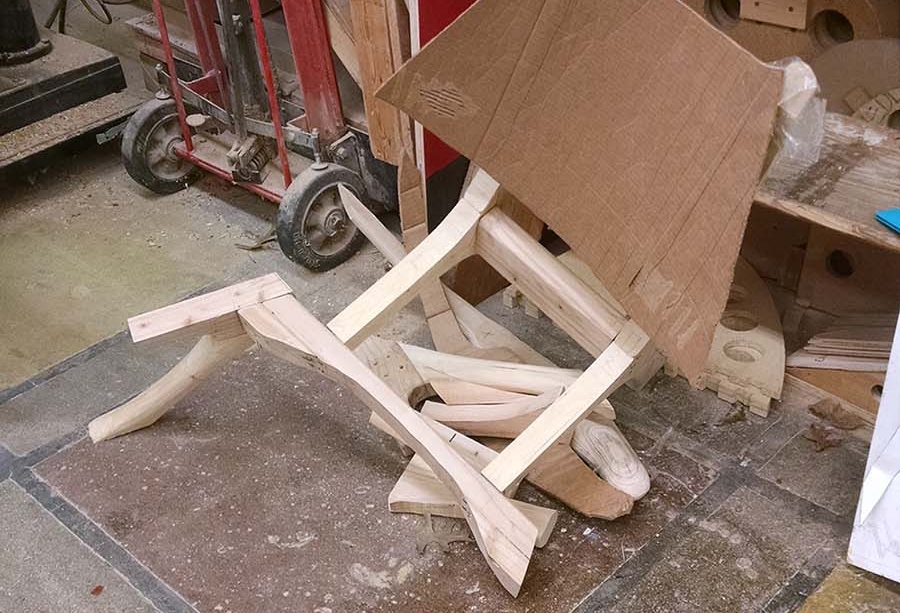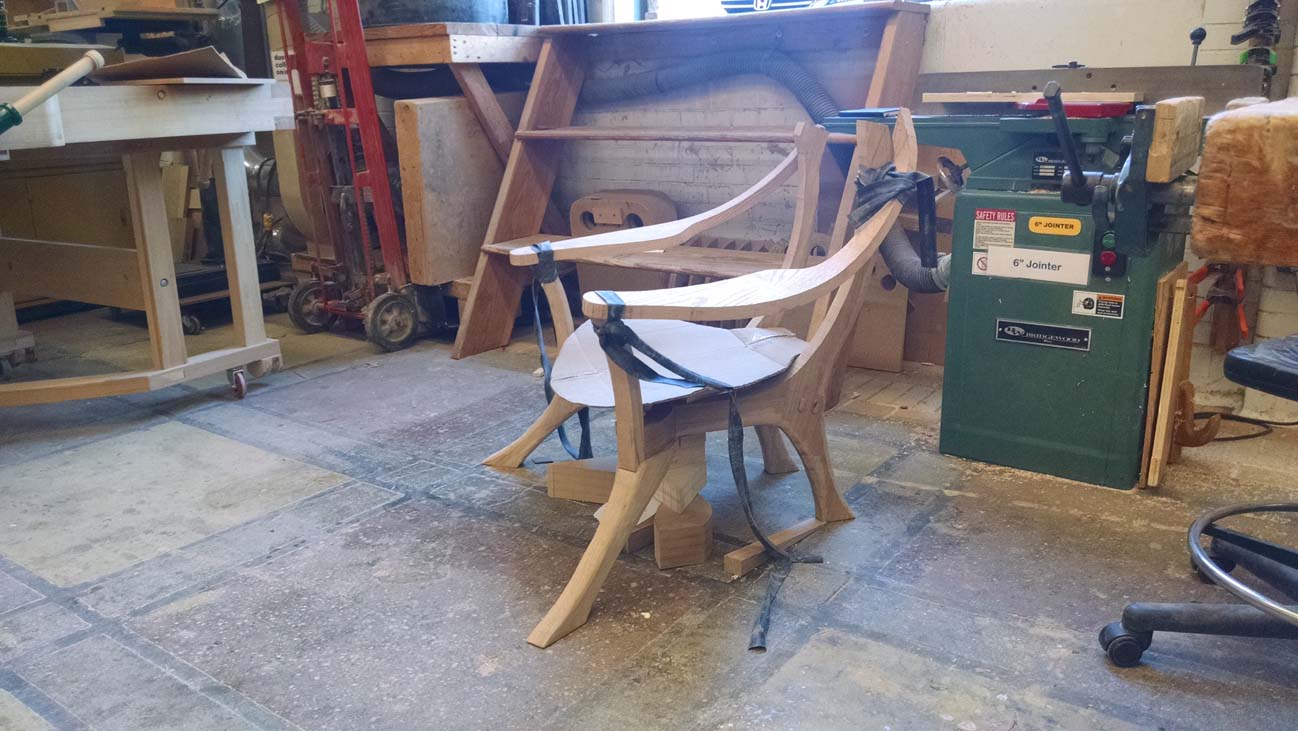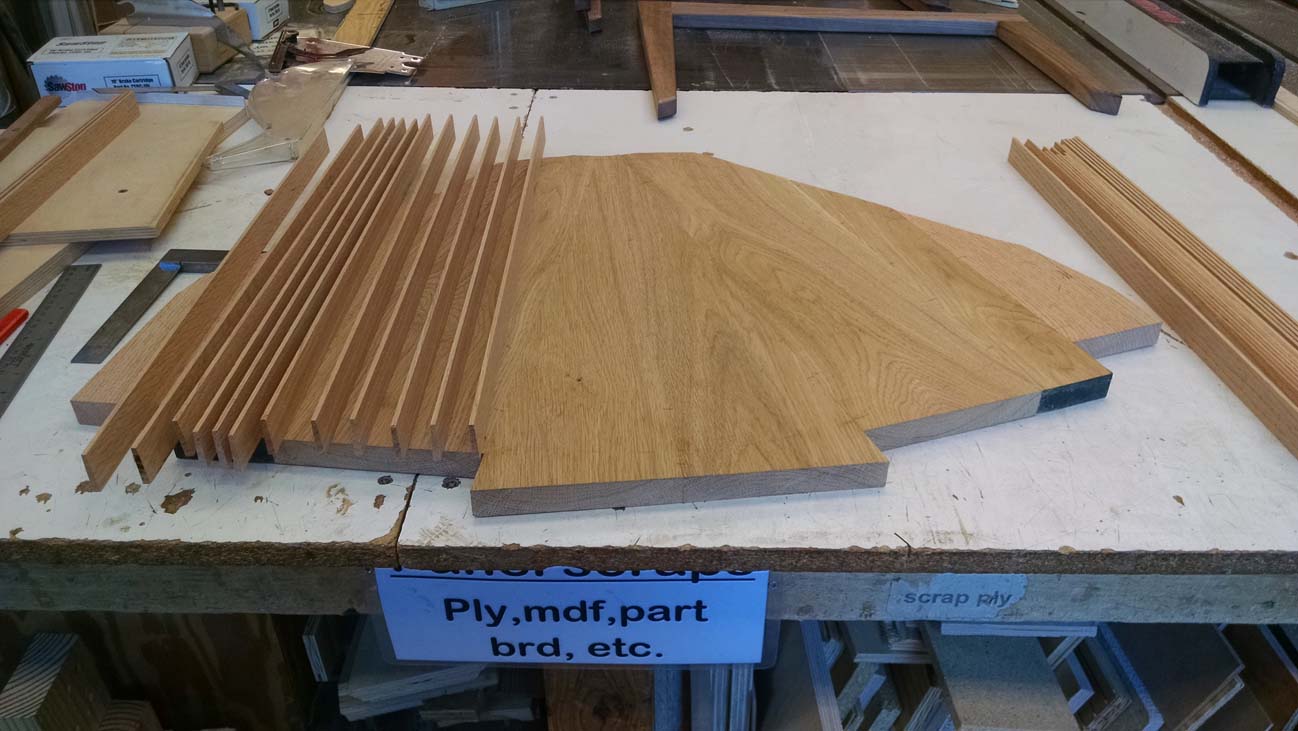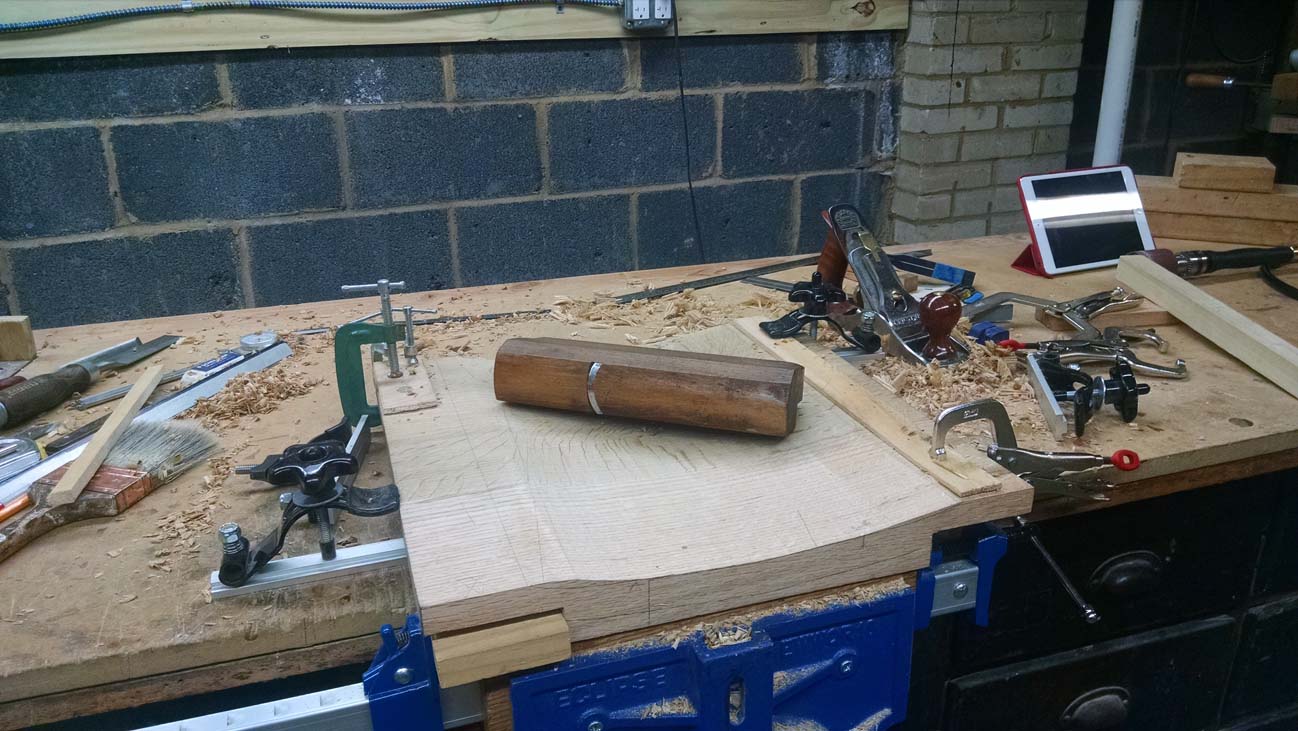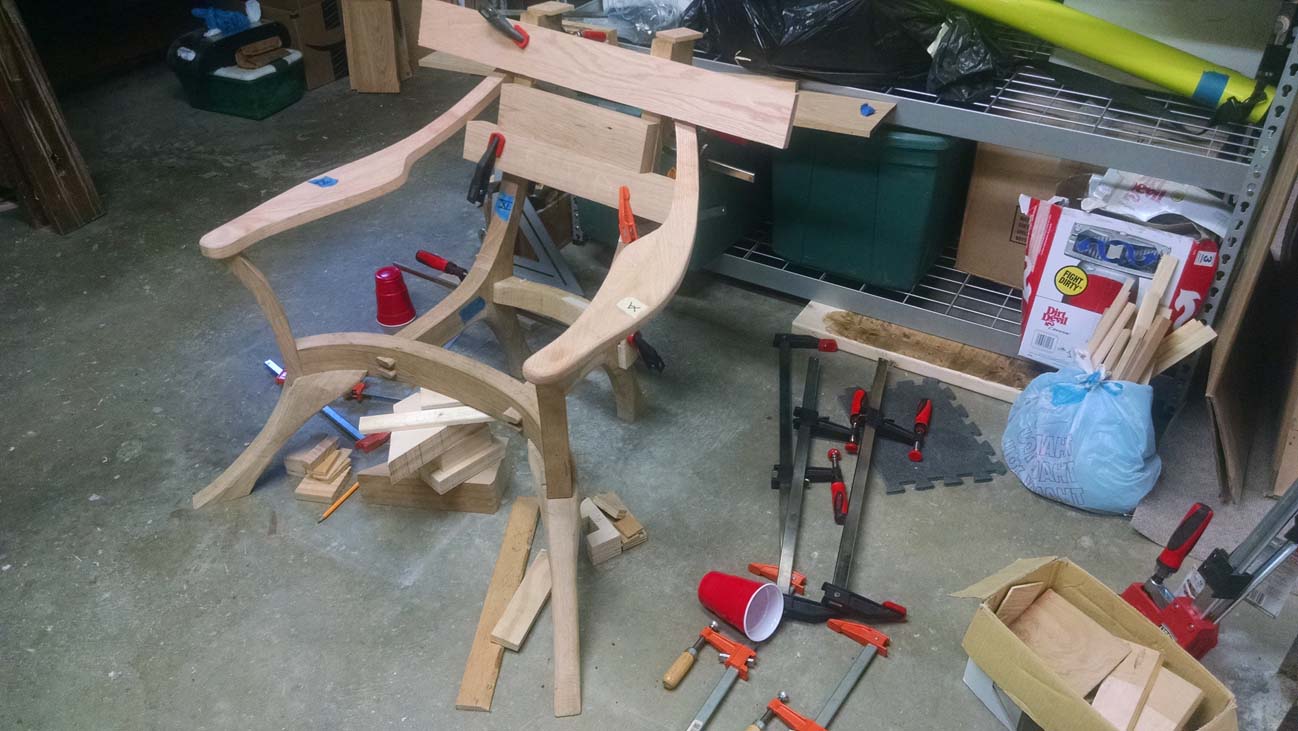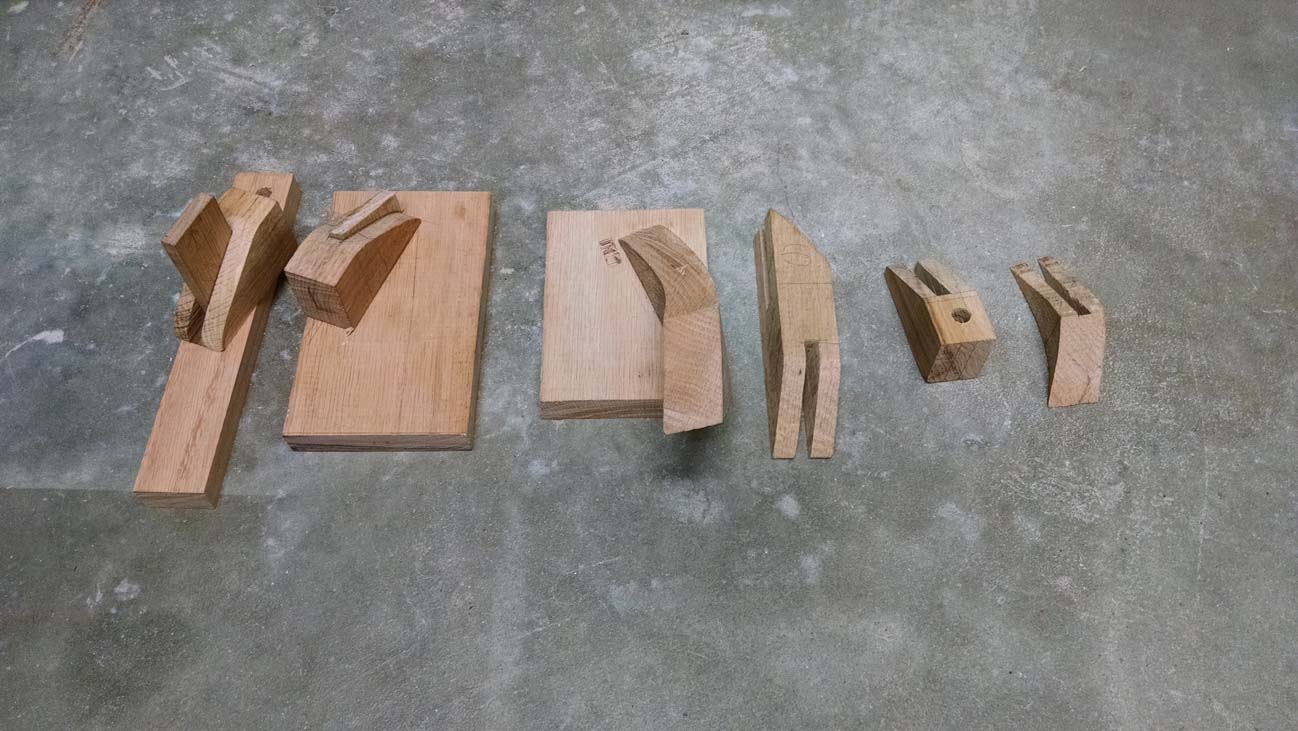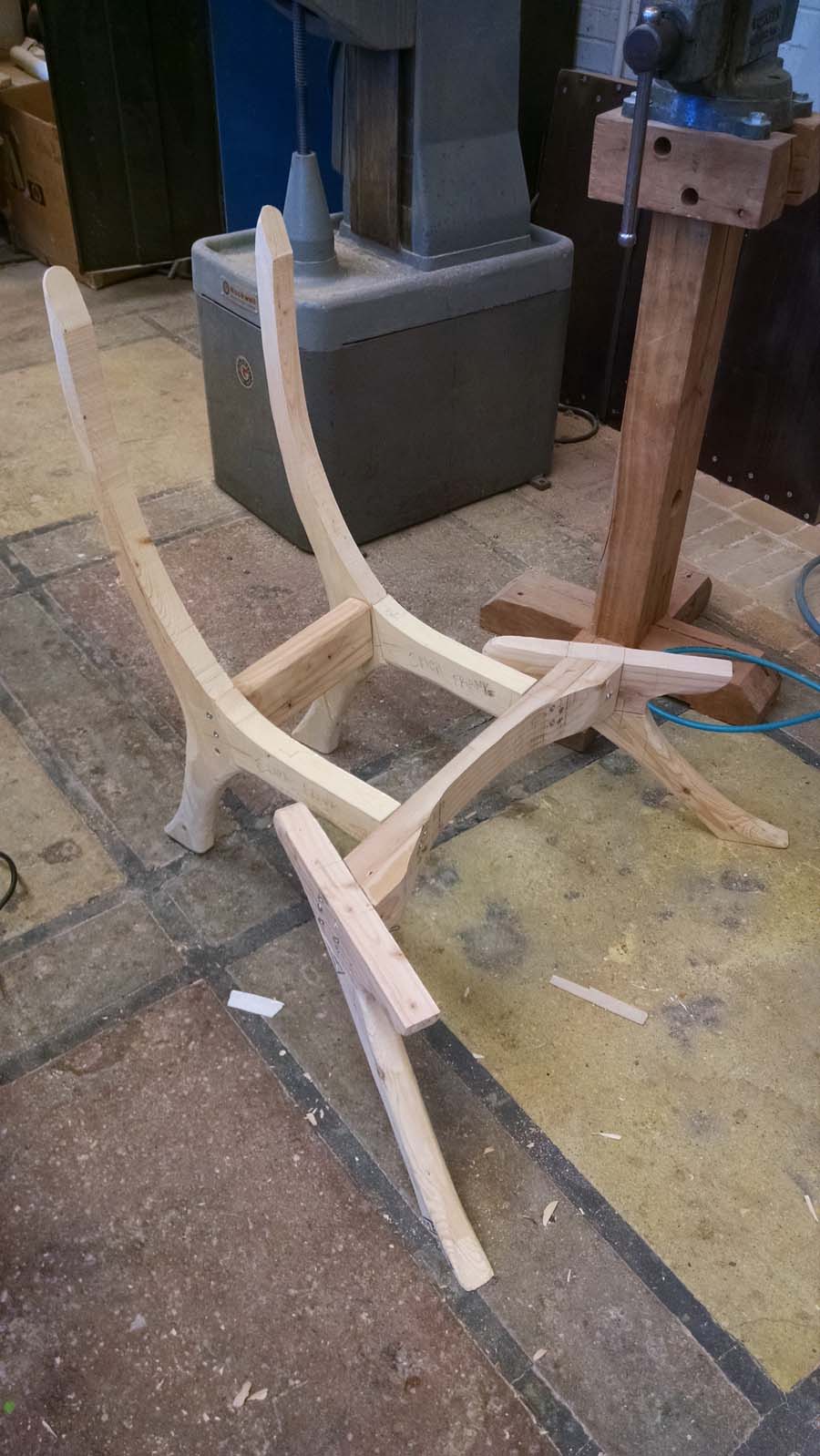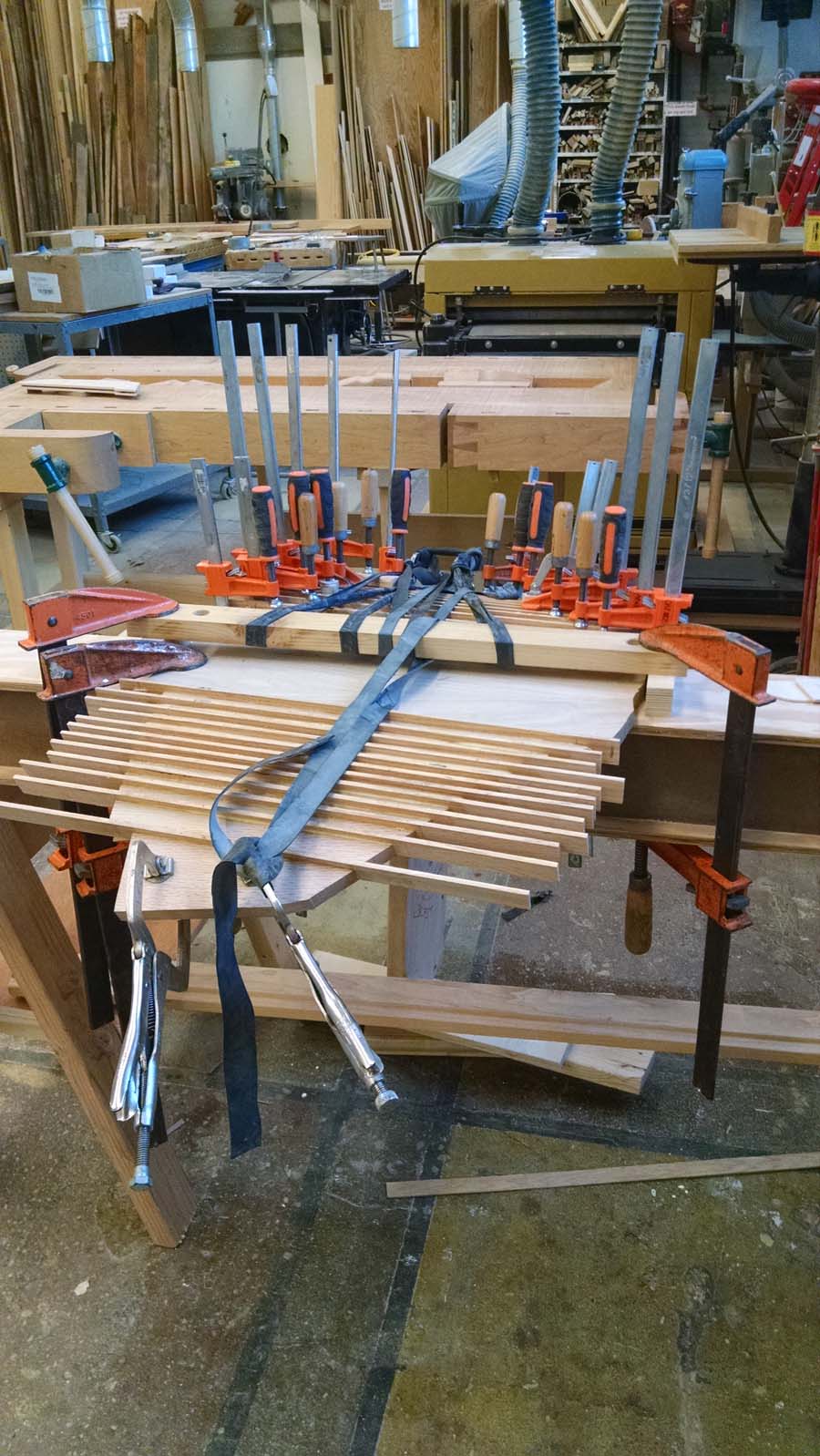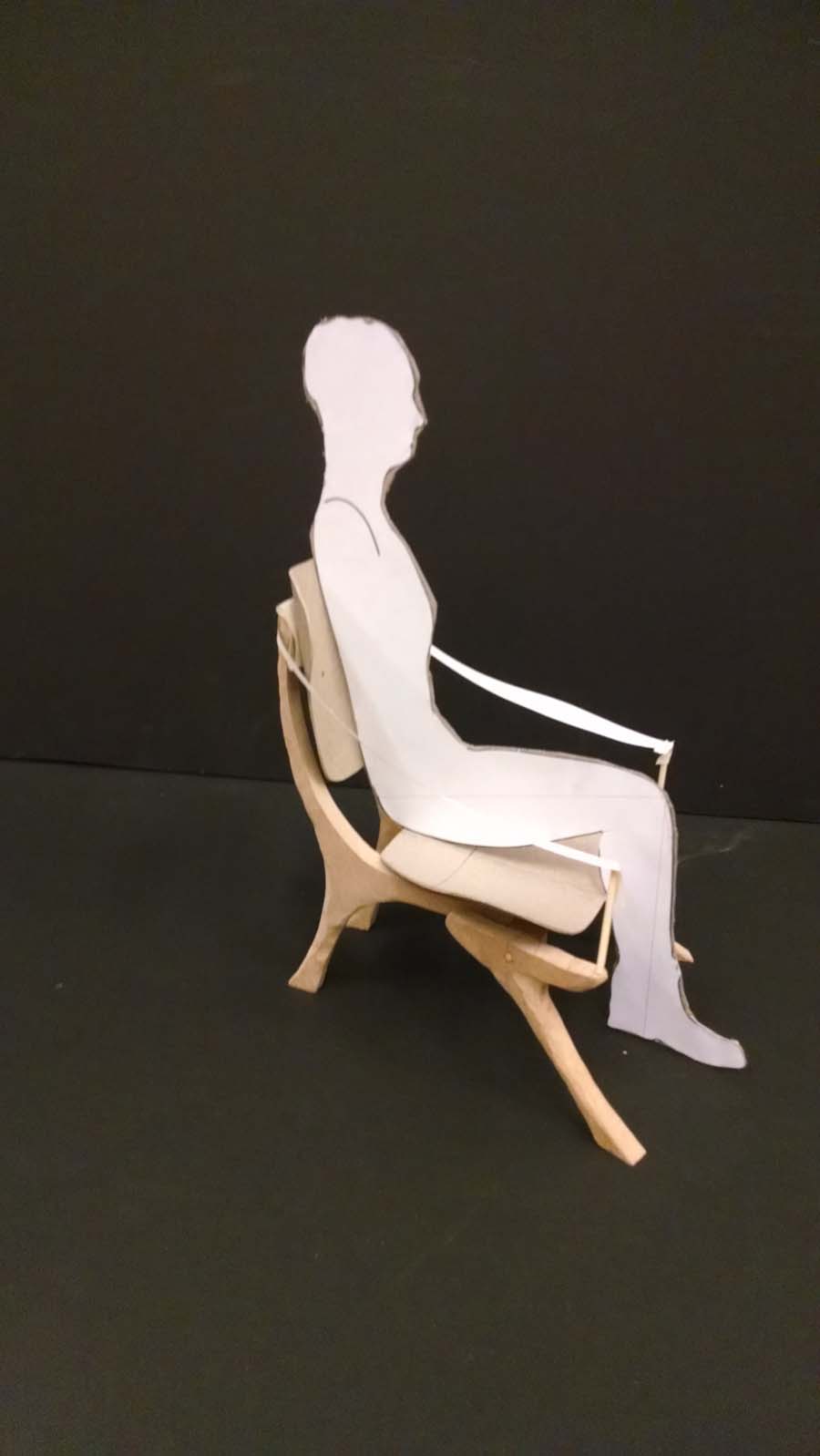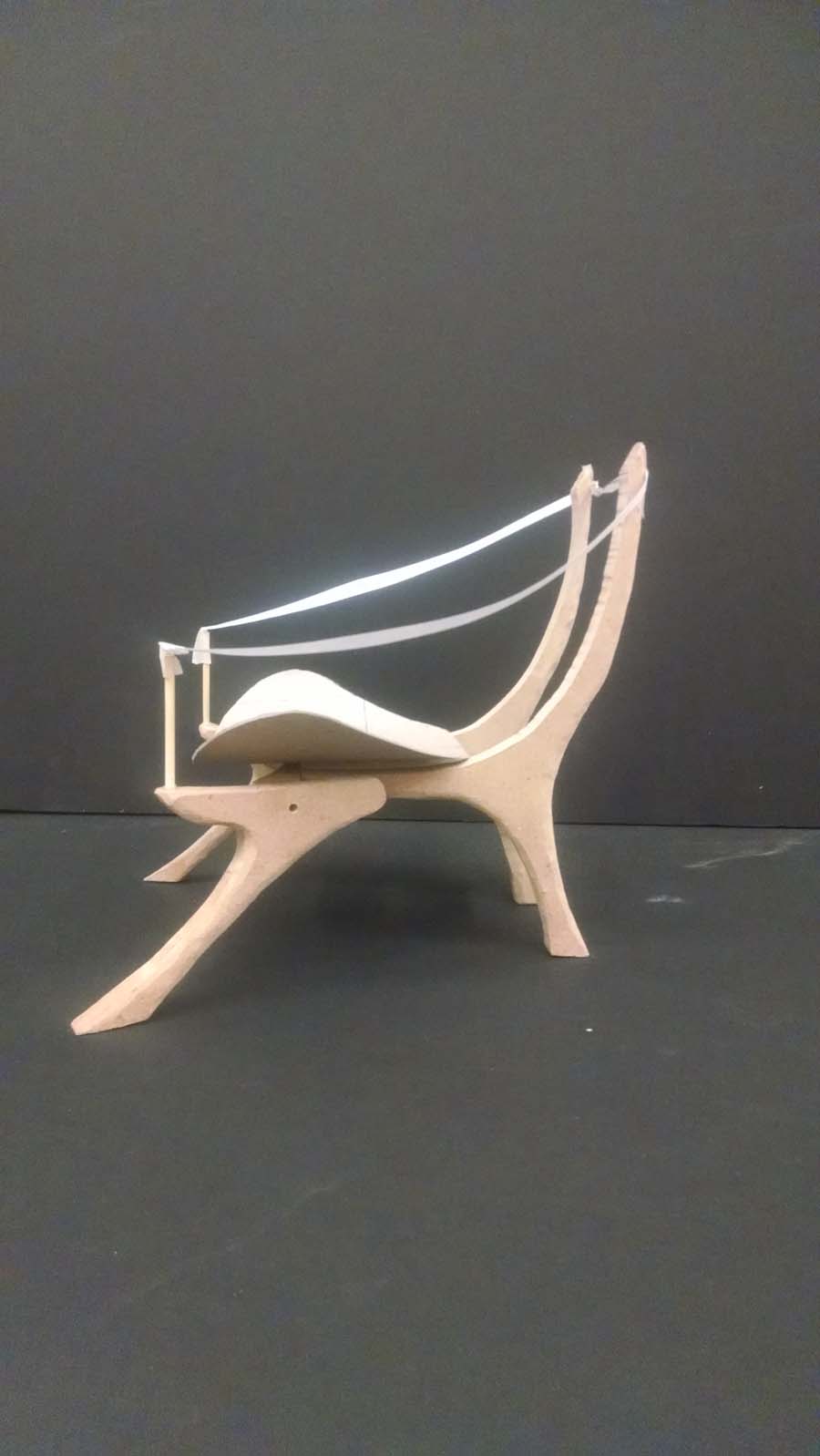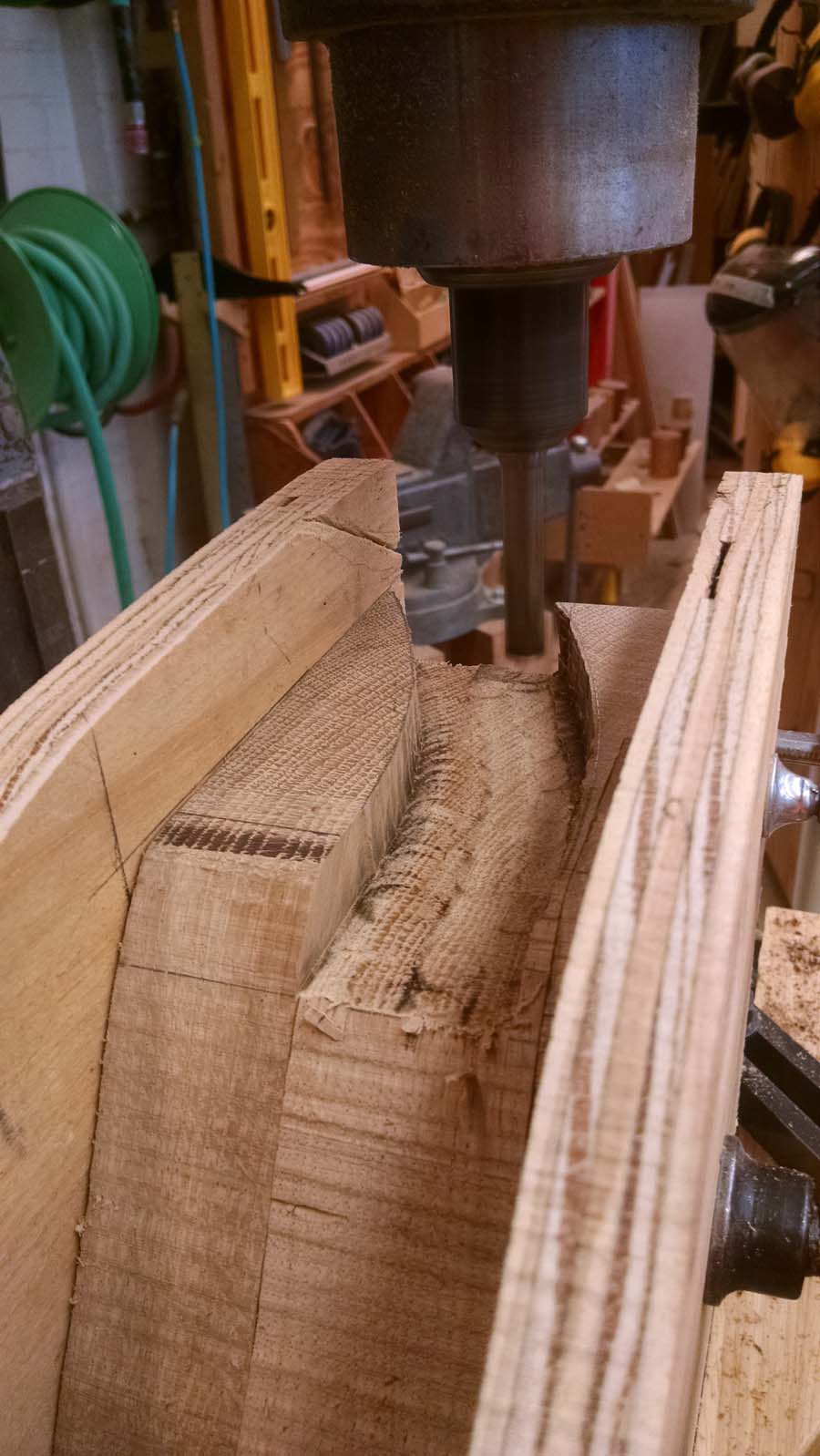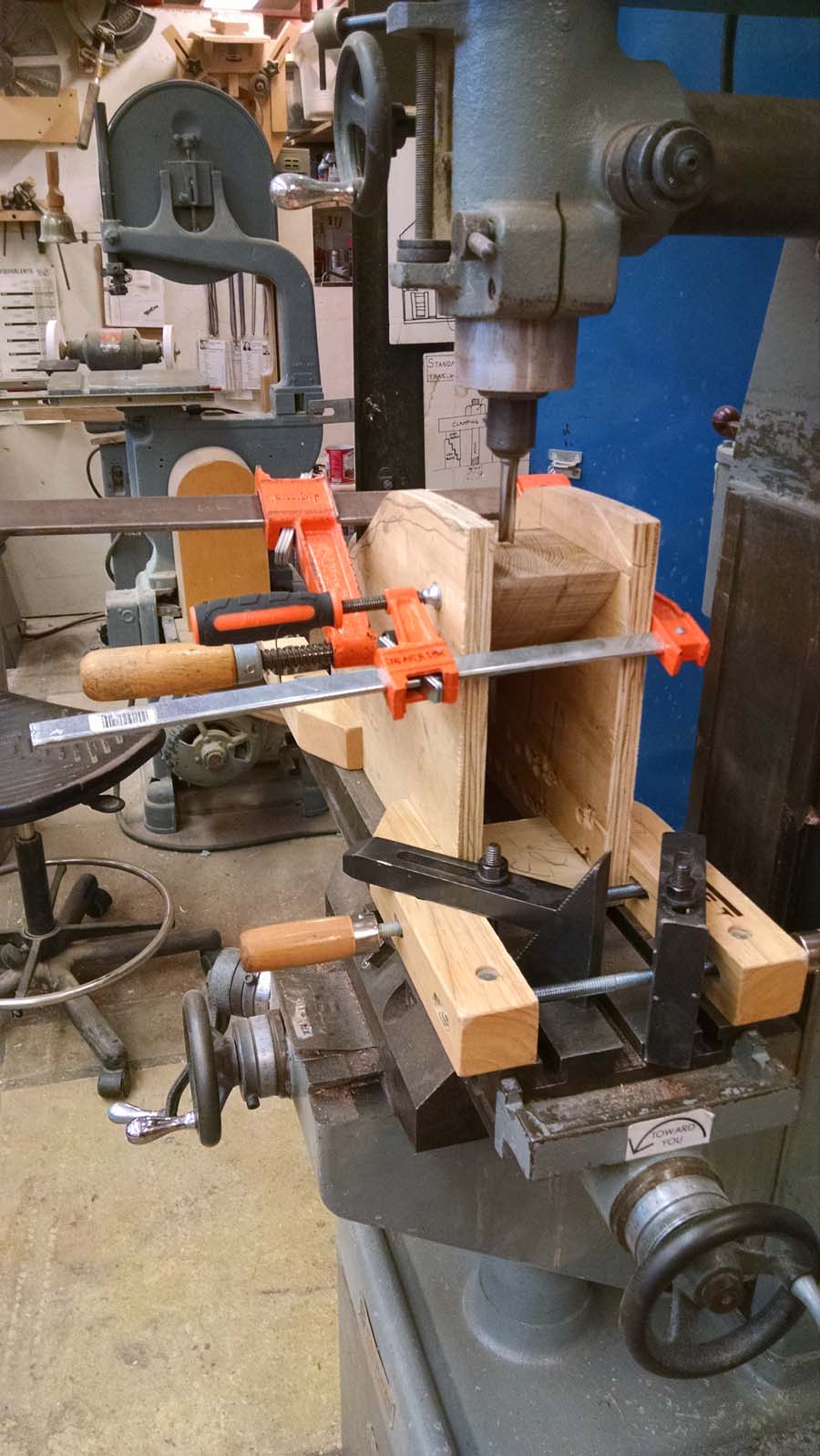PORTLY CHAIR
Spring and Summer 2016
The prompt is to design a chair that encorporates curvature in some way. This project is developed through initial sketches, quarter-size models, full-scale drawings, full-scale prototype, and finally, the built piece.
The chair, originally conceived for studying, reading, or curling up into, is low, squat, and inviting. The wide, scooped seat is ideal for sitting cross-legged or with one ankle tucked up, and the arms encircle a sitter with a distinct embrace. The wide, flat arms also provide a comfortable resting surface for elbows, books, or laptops.
The chair is constructed from a mixture of white oak and red oak. White oak is used predominantly– for the seat, lower back, and frame, while the red oak is used as a secondary compliment, in a composition that results in a gentle blend of species. The red oak carries from one arm, across the top of the back, and down the other arm to emphasize their embracing sweep. The red oak is also lamintated into the underside of the seat in the kerf-bent technique, which serves functionally to curl the seat at the sides, and aesthetically to add the delicate, subtle, and finely-crafted stripes on the underside of the seat.
CONSTRUCTION
To achieve its variety of curves, the chair makes use of bent lamination (front apron), steam bending (arms), kerf-bending (seat), and carving. The prototyping process was extensive, with many changes added as the chair was constructed.
In addition to the bending techniques, the chair makes use of difficult and innovative joinery, including a curved bridle joint reinforced with an internal mortise and tenon. Many of the joints required creative layout between two curved parts.
A distinct mixture of hand tools–chisel, spokeshave, plane, saw– and machines were used, both to cut the actual joints, and to do the shaping and rounding of the pieces.
